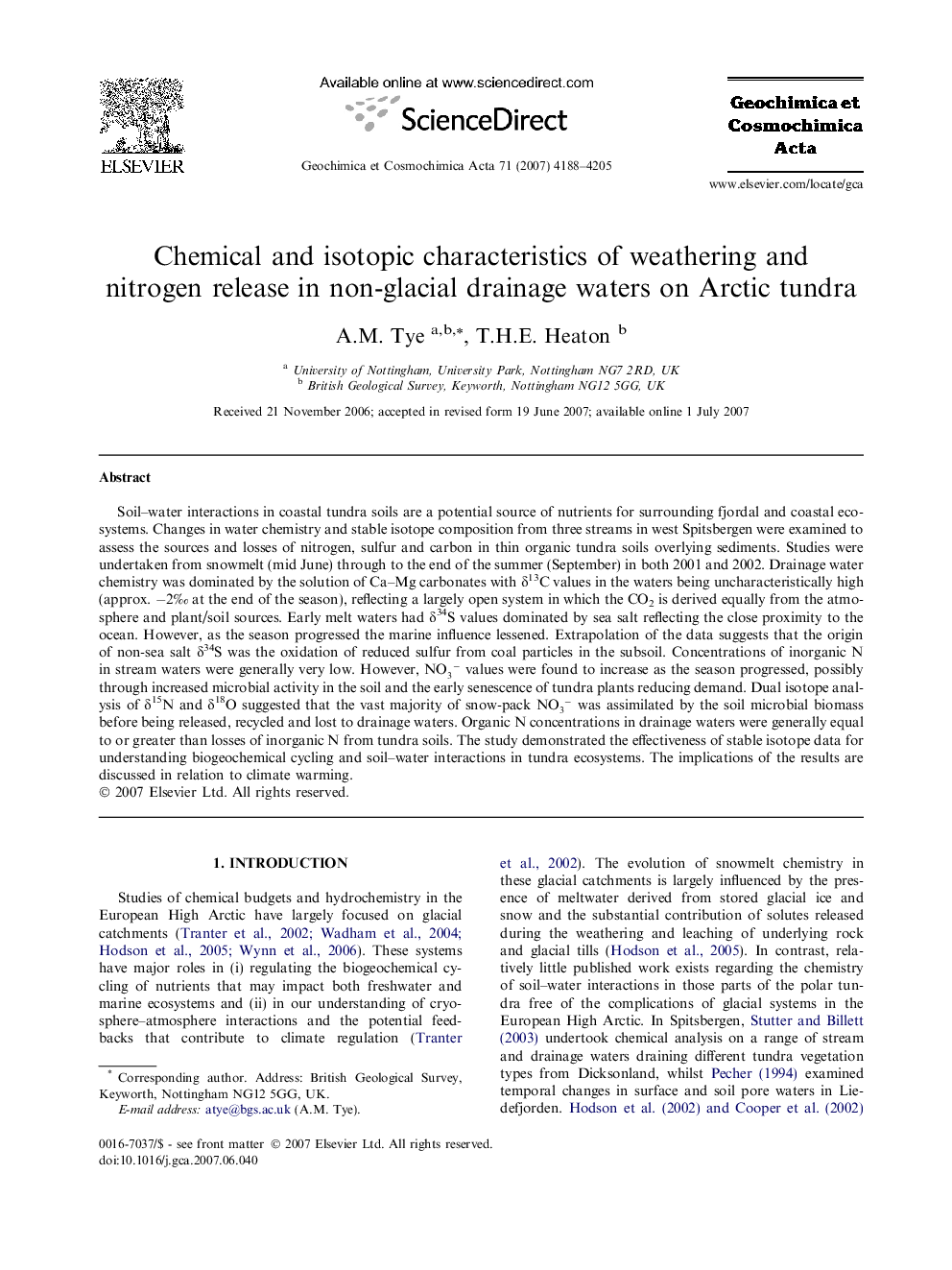| کد مقاله | کد نشریه | سال انتشار | مقاله انگلیسی | نسخه تمام متن |
|---|---|---|---|---|
| 4704479 | 1352914 | 2007 | 18 صفحه PDF | دانلود رایگان |

Soil–water interactions in coastal tundra soils are a potential source of nutrients for surrounding fjordal and coastal ecosystems. Changes in water chemistry and stable isotope composition from three streams in west Spitsbergen were examined to assess the sources and losses of nitrogen, sulfur and carbon in thin organic tundra soils overlying sediments. Studies were undertaken from snowmelt (mid June) through to the end of the summer (September) in both 2001 and 2002. Drainage water chemistry was dominated by the solution of Ca–Mg carbonates with δ13C values in the waters being uncharacteristically high (approx. −2‰ at the end of the season), reflecting a largely open system in which the CO2 is derived equally from the atmosphere and plant/soil sources. Early melt waters had δ34S values dominated by sea salt reflecting the close proximity to the ocean. However, as the season progressed the marine influence lessened. Extrapolation of the data suggests that the origin of non-sea salt δ34S was the oxidation of reduced sulfur from coal particles in the subsoil. Concentrations of inorganic N in stream waters were generally very low. However, NO3- values were found to increase as the season progressed, possibly through increased microbial activity in the soil and the early senescence of tundra plants reducing demand. Dual isotope analysis of δ15N and δ18O suggested that the vast majority of snow-pack NO3- was assimilated by the soil microbial biomass before being released, recycled and lost to drainage waters. Organic N concentrations in drainage waters were generally equal to or greater than losses of inorganic N from tundra soils. The study demonstrated the effectiveness of stable isotope data for understanding biogeochemical cycling and soil–water interactions in tundra ecosystems. The implications of the results are discussed in relation to climate warming.
Journal: Geochimica et Cosmochimica Acta - Volume 71, Issue 17, 1 September 2007, Pages 4188–4205